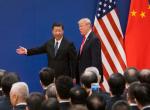Ending months of global speculation over China’s slowdown and its impact on the global economy, China’s National People’s Congress adopted the 13th five year plan aimed at a slower growth rate of 6.5 per cent until 2020, with key reforms in the process.
A closer look however suggests that despite a slightly lower growth rate, the China juggernaut would power on and in a few sectors, the Chinese economy may well emerge stronger than its present state.
Here’s how a few key sectors of the Chinese economy are expected to transition in the forthcoming months.
Manufacturing
Chinese manufacturing has been operating at extremities of the spectrum for a while, with some exceptionally competitive industries and a few non-performing firms. The focus is now expected to shift to financial performance, operational efficiencies and higher productivity levels. Mergers of the more successful state-owned-enterprises to constitute giant manufacturing arms with the ability to leverage synergies, negotiation of contracts and improved credit terms and facilities will aid the long term agenda of an increased geographic footprint globally.
Green Initiatives
In addition to a thrust on renewable sources of energy, the larger cities should see some relief from pollution and traffic woes, as jobs move towards satellite towns with the objective of de-congesting cities. This in itself would act as a catalyst for economic growth as larger areas are expected to be urbanised.
Outward Thrust on Investment
In pursuit of its objectives of market domination, China is expected to continue to embark on addressing the development efforts of Central Asian economies to begin with (One Roadpolicy), in the process gain access to natural resources along the route to eventually develop a footprint in Europe.
The increased co-operation between the UK and China in strategic sectors such as the Nuclear sector will most likely result in aggressive expansion of Chinese interests in the UK in order to acquire technology, gain customers and provide a platform for increased trade with Continental Europe in future.
This strategy will probably also suit the UK, who could be considering an exit from the Eurozone sometime over the next 18 months; China would be a valuable ally to UK in trade, industry and infrastructure development in the times to come.
The UK would of course be eyeing an opening up of the highly regulated financial sector in China in order to cater to the growing needs of the upwardly mobile Chinese consumer seeking financial products and services for investment purposes. The present avenues available for investment to the average Chinese consumer – real estate and the stock market, continue to be on a rickety foundation.
Agriculture & Food Products
Agrarian economies who export to China could possibly expect a windfall as Chinese imports of agriculture and processed foods should see an increasing demand. There could be opportunities for Indian FMCG majors into processed foods too.
Decision-making in China is likely to continue to be dominated by the Central leadership in order to maintain a finer balance between demand and supply; some of the challenges being faced by the Chinese economy actually stem from an over expansion in generation capacity, without a real growth in demand, with provinces competing with each other, sometimes at cross-purposes, in the development story.
The global investor community would most likely reward the bold steps by China by renewing interest in the region and in emerging economies.
Published Date: 17th March 2016, Image Source: http://www.telegraph.co.uk
(Disclaimer: The views and opinions expressed in this article are those of the author and do not necessarily reflect the official policy or position of the Vivekananda International Foundation)









Post new comment